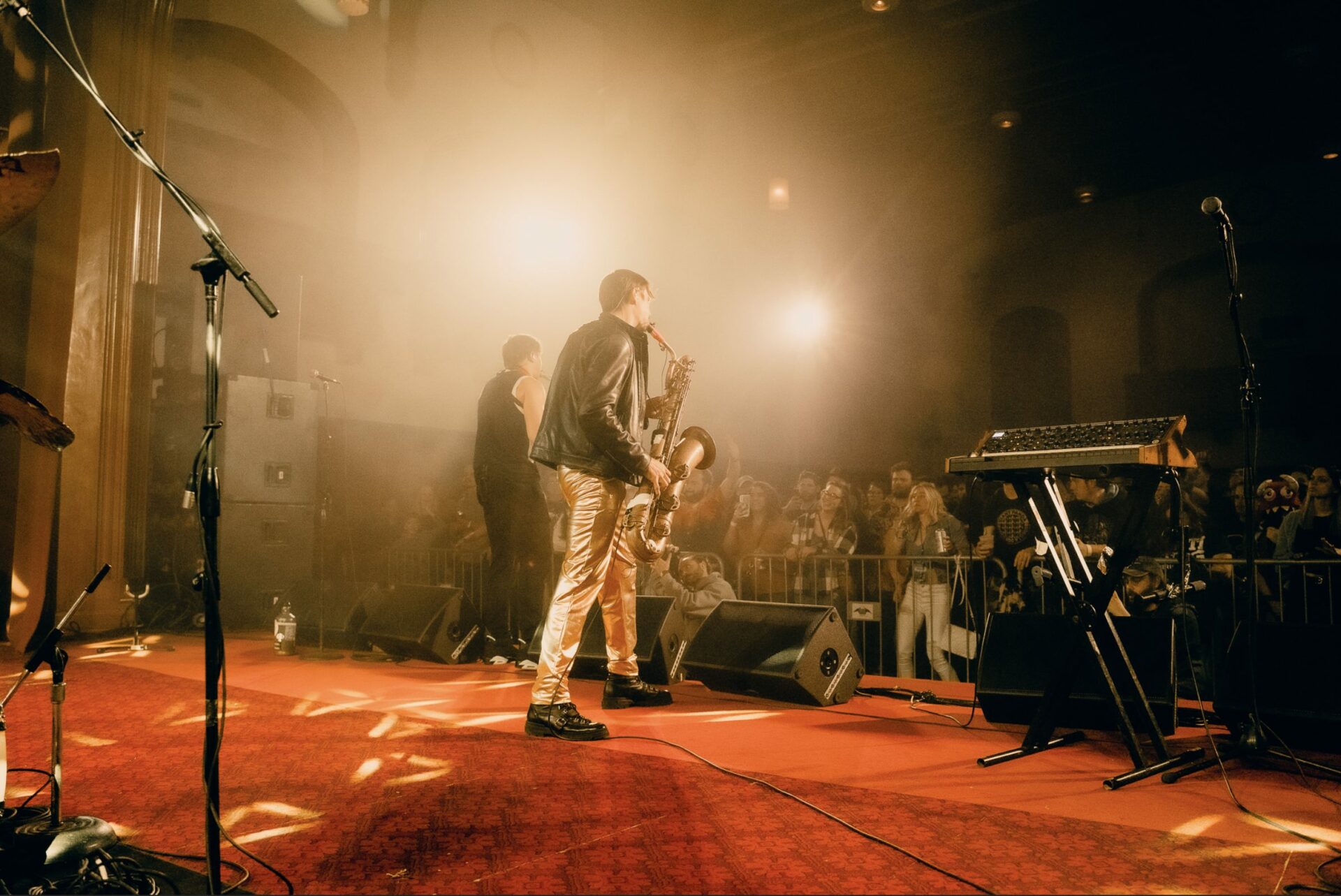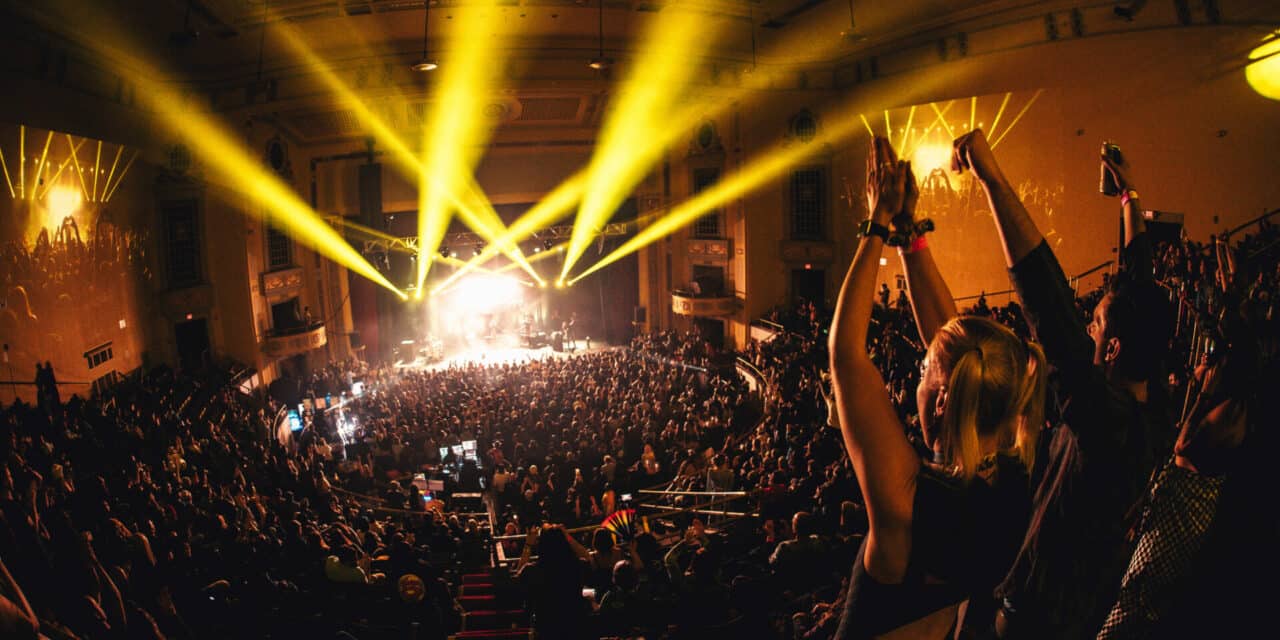TEMPLE TONE: Jam/electronic band Papadosio played the Cleveland Masonic Temple twice in November. Recently acquired by theater operator TempleLive, the venue has seen extensive renovation and investment. (Courtesy Venue)
Extensive upgrades in the works
Built in 1921 and used sporadically over the years as a concert venue, the TempleLive Cleveland Masonic endures as a story of preservation, competition and disruption, as the ornate theater ramps up with sold-out shows, increased activity and a just-announced multimillion-dollar construction project.
“It’s nice to know that what we’re doing right now has garnered enough attention for us to be recognized as someone that is doing a good job and making headway in a market that, quite frankly, we’re fairly new in,” says Garrett Zimmerman, director of operations at the Cleveland Masonic Temple for operator TempleLive.
Situated in downtown Cleveland, the Masonic was originally home to the Cleveland Orchestra. Over the years, it has hosted shows by the Pixies, Joe Rogan, Sturgill Simpson, Ghost and The 1975. The building was acquired in 2017 by Beaty Capital Group through TempleLive, an Arkansas company that operates two other venues in that state. It was previously booked by Live Nation.
The construction project includes a new roof on the building, new climate control system as the venue has never had air conditioning, new electrical systems and switchgear, updates on plumbing and bathrooms, the addition of historical décor, updated production offices, exterior lighting on the building, updating LED signage on Euclid, and enhanced customer amenities. Main theater green rooms are being updated and the theater is being equipped with a art sound system, including a JBL VTX A12 system and subwoofers.
The venue in mid-July sold out immediately with a newly announced show from standup sensation Theo Von, which led to a second date that sold out as well.
“It’s been a fun growing process,” said Zimmerman, recently named director of operations after serving as general manager at the Masonic. Zimmerman is from Cincinnati and moved to Cleveland after being hired by colleague and now TempleLive President Rob Thomas, whose experience includes as a talent buyer at Live Nation.
The Masonic’s main room is 2,500 capacity with a general admission floor and 1,985 seated. An upstairs room called the Asylum that fits 500 people standing and 400 seated. In addition, the recently opened Jester’s Lounge club fits 250.

Live Asylum: The Cleveland Masonic has a main hall as well as two smaller rooms, including the 500-capacity Asylum, pictured.
“It used to be a club for the Royal Order of the Jesters that were the Masons,” Zimmerman said. “We opened that up in February and it’s just popping off. We both played in local bands all of our lives growing up so local music’s pretty important to us. We’ve been really trying to work to activate the smaller rooms in the last year to give smaller touring acts a space and continue to help them grow.”
Upcoming shows at the Masonic include Danzig, Asking Alexandria, Attila, two nights each of comedians Theo Von and Anthony Jeselnik, Violent Femmes and Ty Dolla $ign.
Zimmerman notes the scrappy nature of working as an independent promoter in the market, which has a strong presence from AEG Presents booking the outdoor Jacobs Pavilion at Nautica and the historic Agora Theater down the street.
“It’s always tough being independents, but it’s nothing that Rob and I haven’t been up against before when we were in Cincinnati before coming to these markets,” Zimmerman said. “It’s a grind. You’ve got to keep at it and get as competitive as you can with your offers and, you know, hope the dates line up. It’s been fun.”
The “quirky” nature of a 100-year-old building creates its share of challenges for Zimmerman and his staff, although leads to some perks as well.
“These venues weren’t built with convenience in being rock and roll halls in mind, so that makes it tough,” Zimmerman said. “But we do run multiple ticketed events at one time. Thankfully, because they are kind of quirky and in certain ways inefficient, the spaces lend themselves to good isolation from one show to another. I’ve had death metal shows going on at the same time as singer-songwriter country shows and they share a wall (between the rooms). The buildings are built so thick that I have zero crossover (acoustically), and it always amazes me.”







